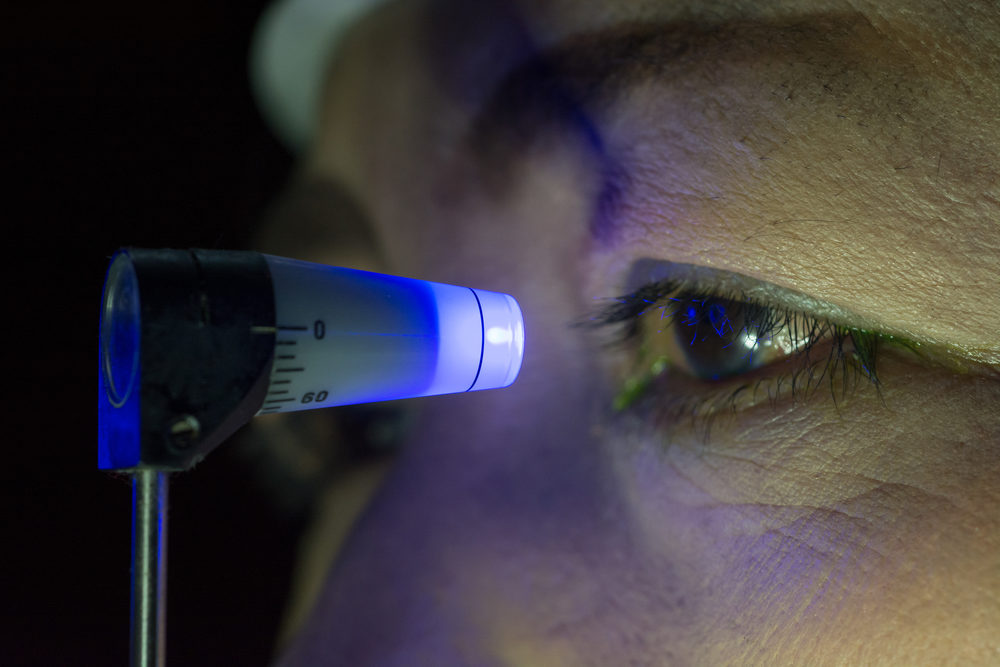
Two new plaintiffs have filed Elmiron lawsuits in Pennsylvania and New Jersey. Both claim that after using Elmiron to treat interstitial cystitis (IC), they suffered from vision damage.
Plaintiffs Take Elmiron and Years Later, Suffer Vision Damage
The first case was filed in May 2020 in the U.S. District Court for the District of New Jersey. The plaintiff, a New York citizen, was diagnosed with IC and took Elmiron as prescribed by her physician from about 2003 to 2020. She was not warned about any risk of retinal damage or vision loss and took the drug believing it was safe.
Now, allegedly because of her exposure to Elmiron, she suffers from maculopathy—a progressive disease affecting the back of the retina that can result in vision loss. She is already developed blurriness and cloudy vision.
The second case was filed in the U.S. District Court for the Eastern District of Pennsylvania. The plaintiff, a resident of Kansas, claims that she started taking Elmiron to treat her medically diagnosed painful bladder in 2005. She believed at the time that the product was appropriate and suitable for her condition.
Then in 2020, she began to experience visual symptoms. On March 3, 2020, she was diagnosed with maculopathy associated with Elmiron use. She blames manufacturer Janssen Pharmaceuticals for failing to warn about the risks, and said had she or her doctor known about them, she would have never taken the drug.
Elmiron Labeling Contained No Warnings of Vision Risks
The FDA approved Elmiron (pentosan polysulfate sodium) in 1996 as a treatment for painful bladder symptoms associated with interstitial cystitis (IC). IC is a medical condition that affects the bladder, causing pressure and pain, and sometimes pelvic pain. Symptoms can range from mild to debilitating, and currently, there is no cure.
From 1996 to 2020, there was no warning on the Elmiron label or the prescribing information about any risk of vision loss. The only mention in the label concerning visual issues was a disclosure in the Adverse Reactions section that noted clinical trial patients had reported conjunctivitis, optic neuritis, amblyopia, and retinal hemorrhage. None of these events, however, are related to maculopathy.
Patients taking Elmiron need to take it for 3-6 months to begin to experience symptom relief and then must continue taking it to maintain that relief. That means most patients use the drug for years.
The retina of the eye is known to be particularly susceptible to the effects of systemic drugs. It has an extensive blood supply and is one of the most metabolically active tissues in the body. It also has little ability to regenerate or repair itself, so it has a high risk of suffering drug toxicity.
Studies Link Elmiron with Vision Damage
Starting in 2018, researchers began to report cases of long-term Elmiron users suffering from a unique type of maculopathy. Scientists at Kaiser Permanente found that of the 140 of their patients who had taken Elmiron for a minimum of 5 years, 22 (24 percent) showed eye damage. According to the findings, the greater the quantity of Elmiron taken, the greater the damage the sty.
Another study followed in November 2019, in which researchers found that patients taking pentosan for seven years or longer were at an increased risk of having maculopathy.
Janssen Pharmaceuticals updated the Elmiron label in other countries, but it wasn’t until June 2020 that the company changed the label for Elmiron products sold in the U.S. to reflect the risk of vision loss.

Exclusively focused on representing plaintiffs—especially in mass tort litigation—Roopal Luhana prides herself on providing unsurpassed professional legal services in pursuit of the specific goals of her clients and their families. While she handles complex cases nationwide on behalf of consumers, Ms. Luhana resides with her family in Brooklyn, New York.










Comments for this article are closed.